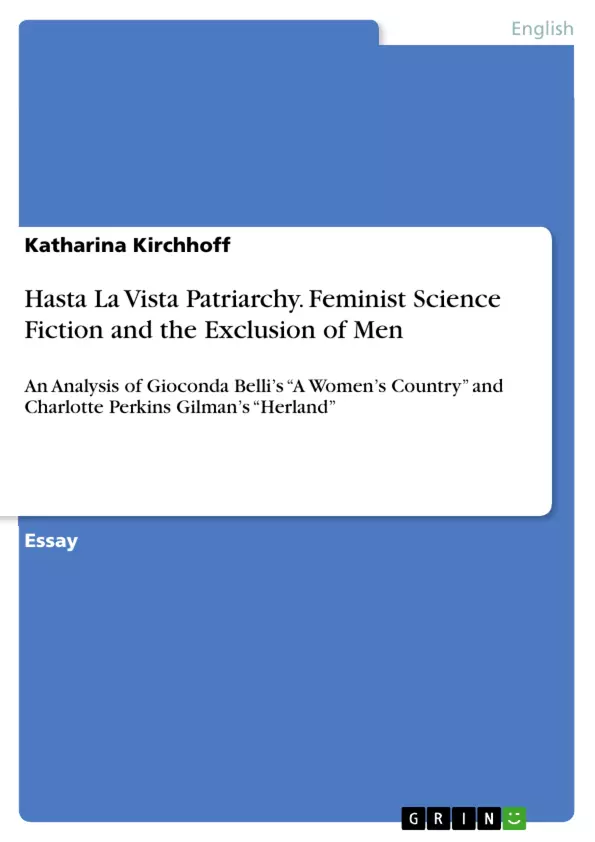In times of ‘no alternative’ we need alternatives. In times of ‘post-feminism’ we need feminism. In times where Science Fiction is derided and ‘nerdy’ we need to beam it back into the academic context. In times where utopia is almost an obscene swearword we need to put it back into perspective. What else are we supposed to imagine other than the utopian?
Is there really no alternative to ecological crisis, to femicide, poverty and inequality? Of course there is, because all it needs is our imagination. If we imagine something different, this is the alternative, this is utopian.
In a feminist academic context there has been utopian imagination. When Christine de Pizan wrote "Le Livre de la Cité des Femmes" (engl. “The book of the city of women”) in 1405 she created a milestone for feminist utopias, long before Thomas More established the literary genre of the utopia with his famous novel Utopia in 1516. Momentous for feminist utopias was Pizane’s decision that female happiness can only be established without men. During the first wave of feminism in the 19th and early 20th century, Charlotte Perkins Gilman, a women’s right activist took a chance on the utopian genre and wrote "Herland" (1915), about an all-female society which is able to reproduce via parthenogenesis and became herewith a leading figure for further feminist writers of utopia.
During second-wave feminism (1960-1970’s) most feminist utopias concentrated on protecting this perfectly equal society, as in Marge Piercy’s "Woman on the Edge of Time" (1976). It was during the third wave of feminism that this model was questioned in feminist utopian fiction and the genre critical utopia emerged.
These days, the genre of the critical utopia has grown quiet. Inequality between the sexes and the oppression of women is no longer seen as the reason for the world going wrong. It is claimed that we have reached the period of post-feminism. Feminism is dead, unfashionable and useless as equality is achieved, therefore there’s no need for a feminist utopia. What should we imagine if there is no desirable alternative or no alternative at all? Fortunately, few but strong female writers refute those assumptions. Nicaraguan author and declared feminist Gioconda Belli published El Pais de las Mujeres (engl. A Women’s Country). [...]
Inhaltsverzeichnis (Table of Contents)
- Introduction
- Theory
- Science Fiction and Utopia
- Feminism, Revolution and the Household- Historical Context of the Novels
- Analysis
- Charlotte Perkins Gilman's Herland
- Gioconda Belli's A Women's Country
- Societies without Men- Femininity, Masculinity and Patriarchy
- Conclusion and Discussion
Zielsetzung und Themenschwerpunkte (Objectives and Key Themes)
This essay aims to analyze the exclusion of men in the utopian novels Herland and A Women's Country, arguing that this exclusion serves as a metaphor for a society where women, free from patriarchal structures, can fully realize their potential in diverse ways. The analysis will focus on the concepts of society, environmental issues, and gender dynamics within these fictional societies.
- The role of utopian imagination in feminist discourse
- The concept of "cognitive estrangement" in science fiction and its relevance to utopia
- The historical and social context of feminist utopias, particularly in relation to the first and second waves of feminism
- The critical analysis of utopian models and the emergence of the "critical utopia" genre
- The exploration of gender dynamics and the implications of societies without men
Zusammenfassung der Kapitel (Chapter Summaries)
- Introduction: This chapter sets the stage for the analysis by discussing the significance of feminist utopias in a contemporary context where "post-feminism" and the dismissal of science fiction are prevalent. It introduces the works of Charlotte Perkins Gilman and Gioconda Belli as examples of feminist utopias that challenge these assumptions.
- Theory: This chapter provides a theoretical framework for the analysis, defining science fiction and utopia, and exploring the concept of "cognitive estrangement." It also examines the historical context of feminist utopias, discussing the works of Christine de Pizan and Charlotte Perkins Gilman, and the development of the "critical utopia" genre in the 1960s and 1970s.
- Analysis: This section focuses on the specific analyses of Herland by Charlotte Perkins Gilman and A Women's Country by Gioconda Belli. It delves into the societal structures, environmental considerations, and gender dynamics of these novels, examining how the exclusion of men contributes to the development of a more equitable and empowering society for women.
Schlüsselwörter (Keywords)
The central keywords and focus topics of this essay include: feminist utopia, science fiction, cognitive estrangement, gender dynamics, patriarchy, societal structures, environmental issues, Herland, A Women's Country, Charlotte Perkins Gilman, Gioconda Belli, critical utopia, and post-feminism.
- Quote paper
- Katharina Kirchhoff (Author), 2014, Hasta La Vista Patriarchy. Feminist Science Fiction and the Exclusion of Men, Munich, GRIN Verlag, https://www.grin.com/document/289031



